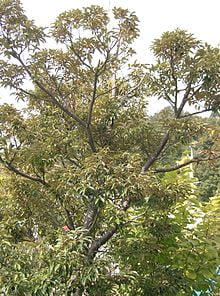Castanopsis

Castanopsis, commonly called chinquapin or chinkapin, is a genus of evergreen trees belonging to the beech family, Fagaceae. The genus contains about 120 species, which are today restricted to tropical and subtropical eastern Asia. A total of 58 species are native to China, with 30 endemic; the other species occur further south, through Indochina to Indonesia, mountainous areas of Taiwan, and also in Japan. The English name chinkapin is shared with other related plants, including the golden chinkapins of the Pacific United States, which are sometimes included within Castanopsis but are more often considered a separate but very closely related genus, Chrysolepis.
They show many characters typical of Fagaceae. They are at least large shrubs but some species grow into sizeable trees. Their leaves are usually tough and much sclerotized and have a well-developed cuticula. Their flowers are unisexual, and the male ones are borne in erect catkins. The epigynous female flowers produce a single seed each but are congregated in small clusters. The fruit is a calybium, the kind of encased nut typical of Fagaceae.[1] The calybium (nut) resembles a pointed acorn; the cupule (casing) is hard like that of beechnuts and spiny like that of chestnuts. Three thickened ridges run the length of the calybium’s shell.[1]
